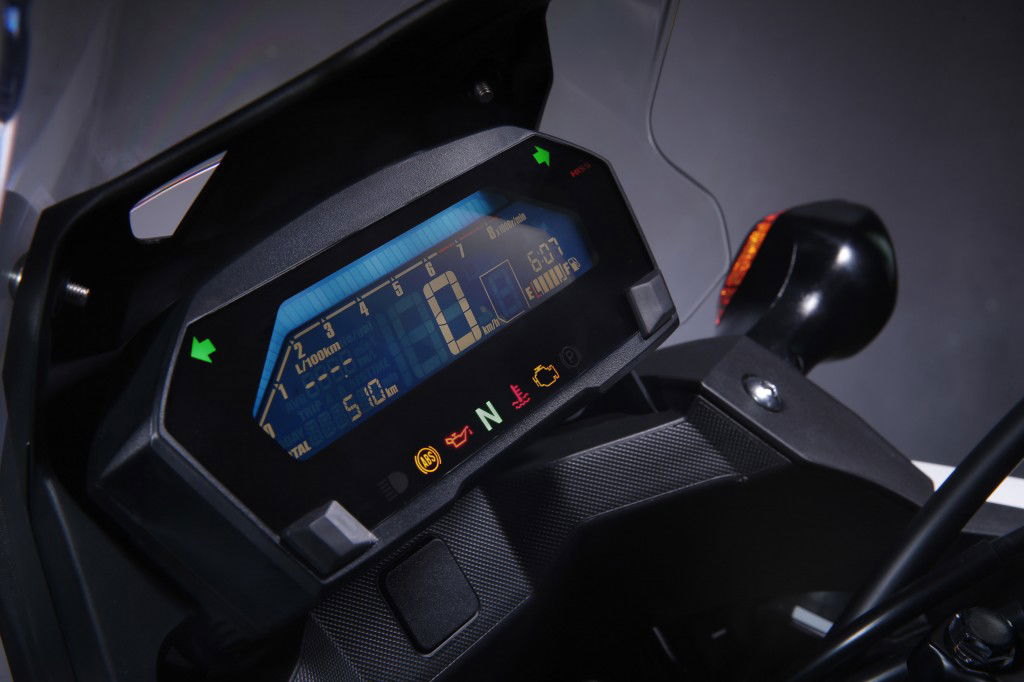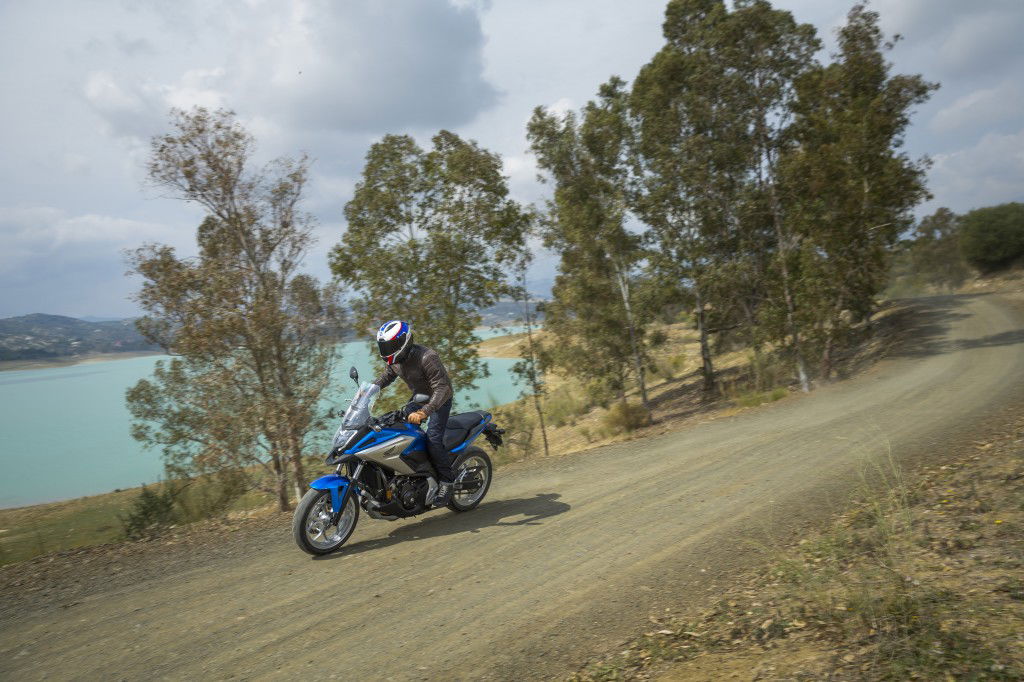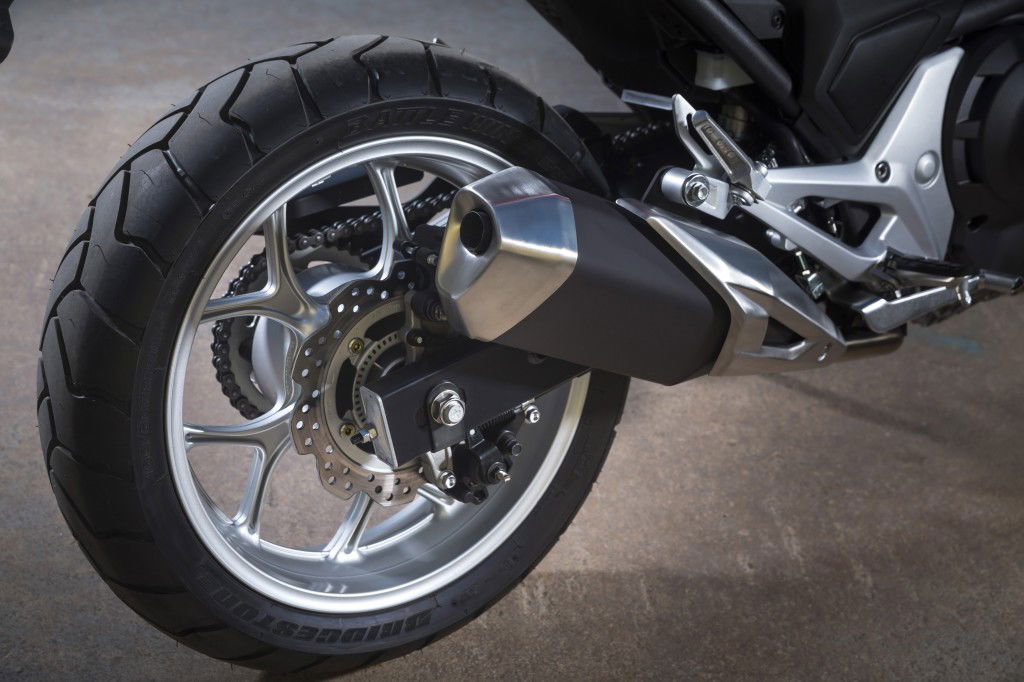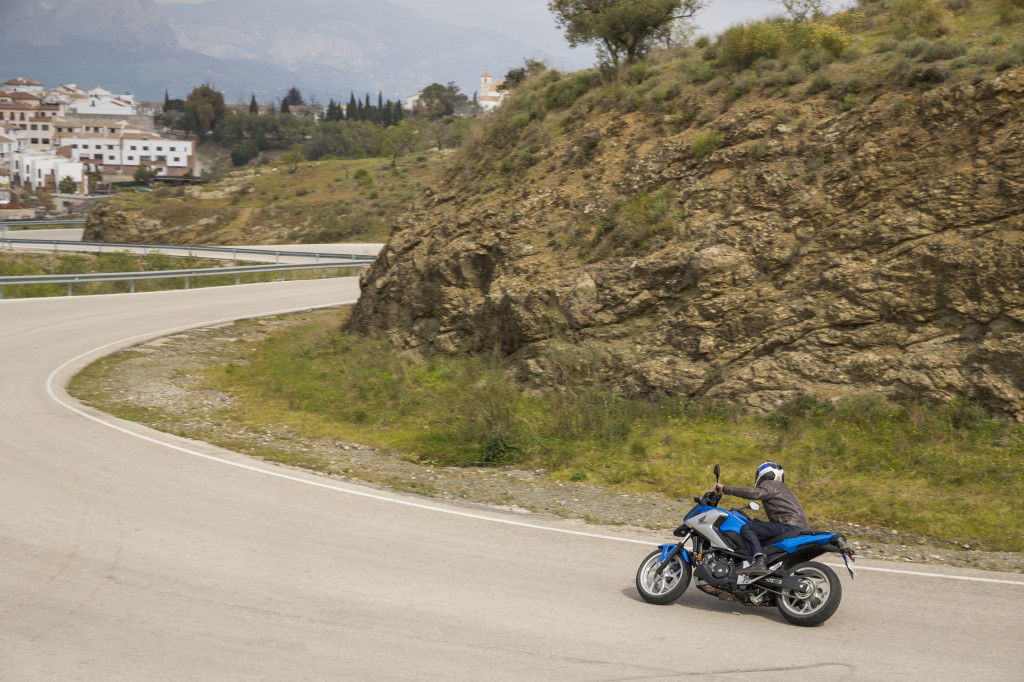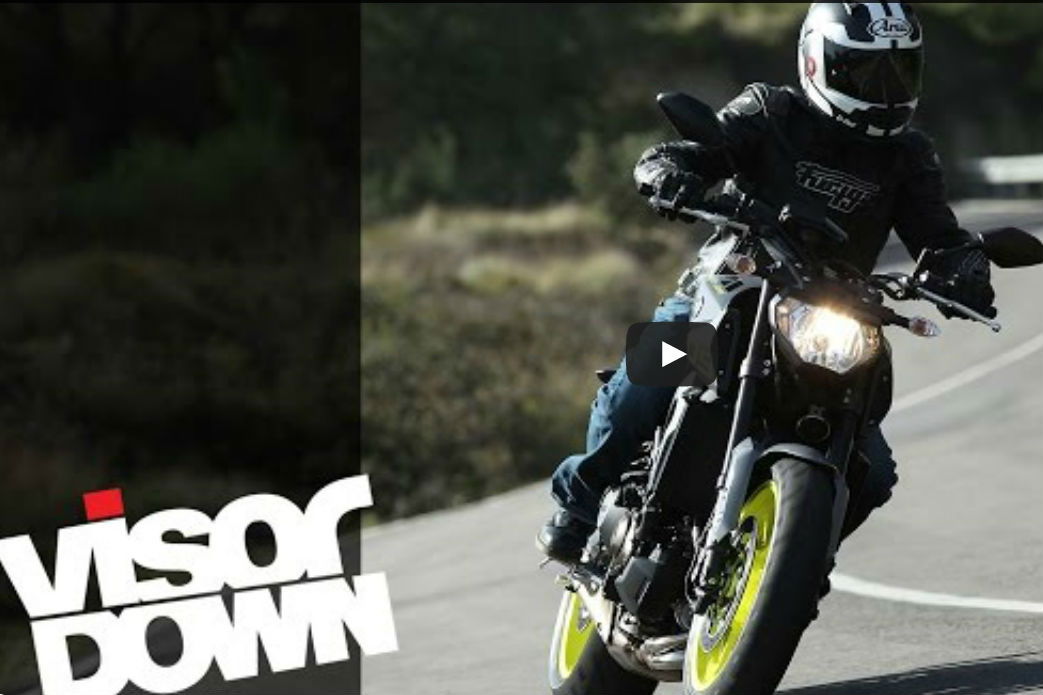First ride: Honda NC750X review
Honda has given the 2016 NC750X more storage space, better suspension and improved DCT, so it's now more comfortable and functional than ever


AS I write this, I’m sitting in my ‘office’ (aka the spare room) and I can hear the first MotoGP race of 2016 blaring out from the next room as my girlfriend gets a much needed fix of Rossi and company.
The din of action that’s tickling my eardrums would be more of a fitting soundtrack to a review of a sports bike. Instead it’s accompanying something that exists at the other end of the motorcycling spectrum – the updated Honda NC750X, a bike known for its practicality, economy and user friendliness, and for being a bit on the bland side.
There’s a reason for that – it’s powered by a 745cc parallel-twin engine that's lineage can be traced back to a car, and not even a car that’s likely to get your trousers twitching; the engine has its roots in the OAP favourite Honda Jazz.
Any motorcycle that has the Honda Jazz cropping up in its family tree is always going to be on the back foot – after all, motorcycles are meant to be about passion, wheelies, impressing potential mates, eliciting scornful looks from old people and looking cool, aren’t they?
I think they are, but they’re also quite practical too, and the NC750X is a bike that has practicality at its core, and to make sense of it, it needs to be viewed for what it is – a very practical tool. It’s properly popular too – it was Honda’s biggest seller last year and has been a top 10 best-seller in Europe since its launch.
Honda says this updated 2016 model has got a more rugged look, better suspension thanks to new Showa 'Dual Bending Valve' forks and boasts increased luggage space. The bike also features a new front brake caliper, LED lights front and rear and a new silencer with a deeper sound.
Looks-wise, the NC750X has indeed been sharpened up, and I suppose it does look more adventurous than before. But rugged? The NC750X doesn’t exactly look like Russell Crowe after an all-nighter and a brawl outside Wetherspoon’s. Regardless, Honda’s claim is born out of the fact that the front of the 2016 NC750X has gained some more definition thanks to the new, sleeker LED headlight and a more angular, revised top front fairing. In terms of styling, it’s a sharp step in the right direction.
It’s comfortable too. Plonking my arse on the cushy seat puts me in a very natural position. It’s upright and the bars fall in to my grasp without the needs to stretch, contort or shuffle my natural position in the seat. It’s a nice seating position, and make me feel like I could ride until I'm ready for bed. Thanks to the mass of ‘tank’ (actually a storage compartment with room enough for a full face lid), the stretch to the bars looks like it should be further than it actually is.
The engine remains unchanged from last year: it still makes 54hp, delivered at 6,250rpm and 50lb/ft torque, delivered at 4,750rpm. It revs to just over 6,000rpm – much like the Ford Ka my Mrs drives. The NC750X’s power delivery is smooth, unthreatening and ultimately well suited to its functional purity.
The torque and power curves are linear and ultimately the engine is as exciting as a bowl of cold rice pudding. But by the end of the test ride, I’d begun to accept that this is OK because the motor does everything that’s asked of it without complaint and although it doesn’t have any character, there’s enough midrange power on hand for motorway-speed progress, B-road blasting and a town manoeuvres. The engine is best described as acceptable, doing everything that’s asked of it without complaint. It just isn’t memorable.
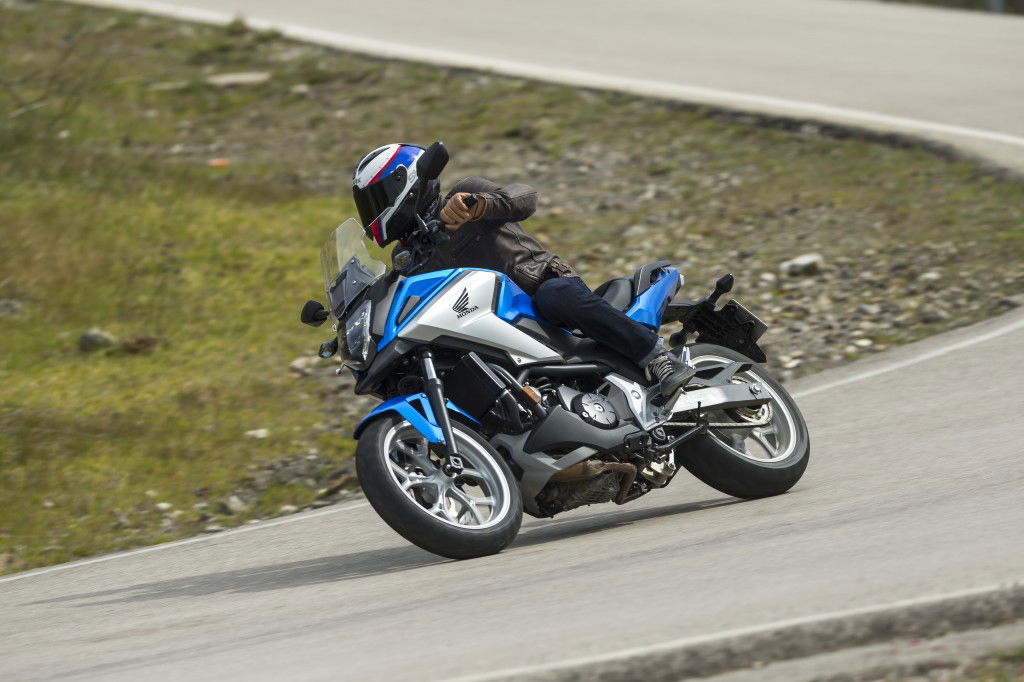
All the NC750Xs we rode on the launch were equipped with DCT (although a manual version is available) and having not ridden a DCT bike before, this was what I was most curious about.
With DCT in fully automatic ‘Drive’ mode to begin with, the engine had a tendency to feel laboured because the bike is trying to be economical and sensible, thanks to DCT engaging the next gear at the earliest opportunity. I don’t doubt how effective this mode is for economy, but it doesn’t make for an exciting time.
That’s why, once away from the centre of Malaga, I flicked the mode switch next to the throttle to ‘Sport’. Sport mode is broken down in to three levels – one is the tamest, three is the most sporty – with the engine holding gears for longer and down changing sooner to provide more engine braking. Level one doesn’t feel much different to Drive mode, and level two only felt like a small change so I left the bike in sport three most of the time.
Although level three does instil the NC750X with the most chutzpah, it didn’t always hit the mark for me when it came to how I wanted the engine to feel. Using this mode often made me want more engine braking. It could be similar for accelerating too - after slowing down for a corner, once getting on the gas again, the engine would often be in a gear too high for my preference and unable to give me the kind of instant punch I’d want coming out of a bend.
Fortunately, the automatic modes can be overridden with the plus and minus buttons on the left bar; you operate one with your index finger and one with your thumb. They remind me of an Xbox controller. I was hoping the manual elements of DCT would be akin to paddle shift on a sports car, but it’s not as exciting as that. For the reasons described above, being able to change down at will is useful, and with the engine occasionally overridden and made to work harder, the NC750X feels at its most awake and eager.
While fully manual mode undoubtedly provides the most precise control over how the engine feels, I got quickly got bored of it because I like changing gear on a manual bike – it’s an essential part of what riding a motorcycle is to me. Manual mode doesn’t really compare to that level of control or sensation, so most of the time I ended up relinquishing myself to sports mode and allowing the super smooth gearbox to do its thing underneath me.
Once I’d gotten over phantom clutch lever syndrome and stopped trying to pull the clutch in and put the bike into neutral once I’d stopped, I came away quite liking DCT. On a bike like the NC750X, it’s an addition that makes riding easier, more convenient and more economical without requiring anything from the rider. On the twistier sections of the launch route, when I thought I’d be in fully manual, I preferred having the bike in sport mode because it allowed me to focus all my attention on cornering and braking.
And I found braking could occasionally need some additional attention. The brakes are OK, but have unremarkable bite so the lever needs a tug to get the pads talking to the discs in earnest. Having said that, feel through the lever is nice but the sharpness I missed from the front Nissin caliper is exacerbated by the reduced engine braking and on faster stretches of road I often felt like I had to work the brakes harder than it felt necessary to slow down as much as I wanted, or at least achieve the sensation of slowing down.
The suspension is comfy, and for this bike, that’s good. In fact, it came in handy a few times when I hit some faster sections of unusually poor Spanish road surface when, with the bike mid corner and ripe for being unsettled by seams in the tarmac, the front suspension soaked it up with the bike remaining pretty composed. At faster speeds the soft but well damped forks were noticeable but the NC750X always managed to feel stable and I felt happy manoeuvring it at pace through the bends on the outskirts of Malaga.
Some of the roads we tested the NC750X on were on the skiddy side of grippy, and for the most part the Bridegstone Battlewing tyres were alright, but I never completely trusted them. I had a moment where, leant over in a corner and hitting a depression in the road, the forks compressed to load the front tyre a bit more, at which point the front of the bike momentarily felt decidedly vague. I also had two moments when the rear tyre felt like it wasn't gripping that well under power, something I think was evidenced by a couple of suspect marks on the side of the rear tyre, although as I say - at times the roads weren't grippy.
The NC750X’s dash is well suited to the bike. It took me all of two minutes to get used to and I found it really easy to quickly glance down and see what riding mode I’d selected, what gear I was in, along with all the other important stuff. The mirrors also functioned as such and I got on with the screen really well too, although I’m not that tall – perhaps if you’re blessed with a lankier frame, you’ll want something a bit taller.
The 2016 Honda NC750X is more of the same, done better. It’s a bike made for taking the edge off daily duties, and doing them with more convenience, comfort and economy than a lot of bikes can manage. But there’s a catch: it does everything with less pizazz than a lot of bikes. However, it’s ridiculously easy to get on and ride, and is undoubtedly easy to live with on a daily basis. Having ridden the NC750X I have to concede that yes, there’s merit to a motorcycle that’s a designed to play up to the practicalities of biking, and this can only be a good thing if it results in less congestion and tempts more people into choosing life on two wheels.
Model tested: Honda NC750X DCT
Price: £7,049
Engine: 745cc liquid-cooled eight-valve parallel-twin
Power: 54hp at 6,250rpm
Torque: 50lb/ft at 4,750rpm
Kerb weight: 230kg
Suspension: Front - Showa 41mm diamter conventional fork. Rear - Monoshock damper
Brakes: Front - Two-piston caliper and 320mm disc. Rear - Two-piston caliper and 240mm disc
Tyres: Bridgestone Battle Wing, 120/70 front, 160/60 rear
Seat height: 830mm
Fuel capacity: 14.1 litres

